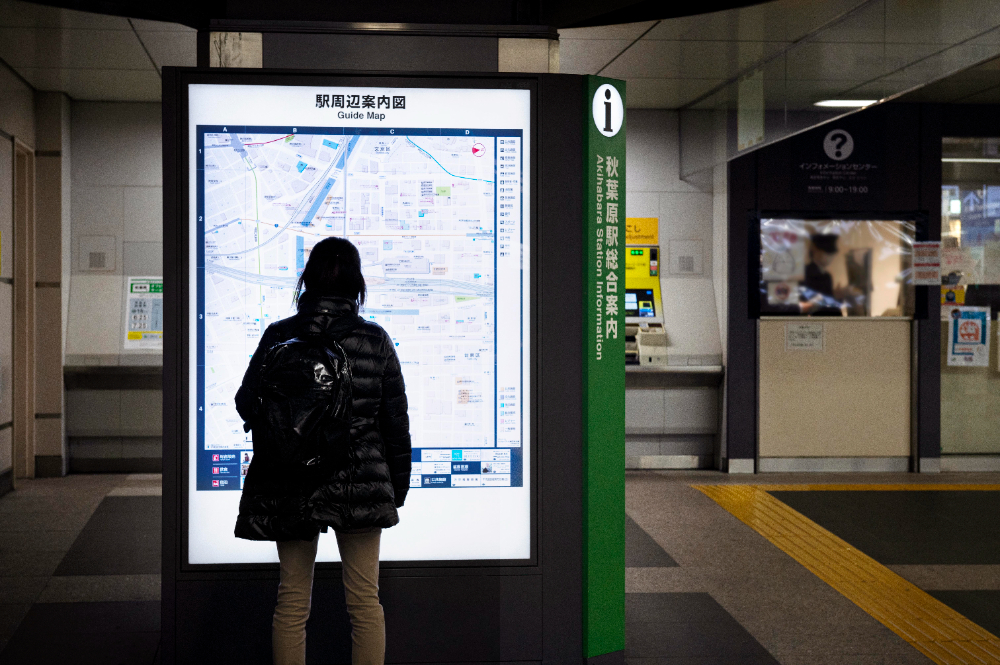In the modern world, urban landscapes are rapidly changing to become smarter, efficient, and interconnected. Smart cities, through advanced technologies, come up with innovative solutions for urban challenges. Among the technologies involved, digital displays are playing a significant role in shaping the future of cities by enhancing communication and information sharing. In this blog, we will discuss how digital displays contribute to the growth of smart cities and the ways in which they improve the lives of residents and visitors alike.
What Are Digital Displays and Why Are They Important for Smart Cities?
Digital displays are electronic display means for presenting information to the public in static, video, or even real-time formats. These displays can be applied to a variety of fields like digital signage, interactive kiosks, traffic management systems, and public announcements. For the purpose of this study, smart cities integrated these digital signages with IoT, thereby offering real-time information for timely aid in everything from the transportation system to alert emergency cases.

These screens are an important interface of communication, thereby ensuring that all the residents and visitors have the information they want, at any place and time. Digital displays that transform public spaces into interactive hubs of information foster a more engaged and informed community.
Improving Communication in Intelligent Cities
A well-working smart city is built on the foundation of effective communication. Digital signages are a highly dynamic and immediate way of getting in touch with the people. The following are key areas in which they have improved communication:
Public Announcements and Emergency Alerts
During emergency situations like natural disasters or security issues, digital displays can disseminate essential information to residents and visitors in the city at a faster and more reliable speed. Emergency alerts, evacuation routes, and updates are displayed in real-time for safety measures. During such unpredictable situations in a dynamic city, the screens keep things organized and coordinated.
Real-Time Traffic Information
Traffic congestion has been a common problem in many urban areas, and digital signage is also alleviating this situation. Real-time traffic data on road closures and alternative routes help to guide drivers and pedestrians away from crowded paths and subsequently reduce the overall level of congestion. This not only streamlines the process of commuting but also helps reduce pollution, as it minimizes the time spent idling in traffic jams.
Public Transportation Updates

Public transport systems form an integral part of smart cities as a means to move large numbers of people effectively. Digital screens mounted at bus stops, train stations, and subway entrance points can show the schedules, delay, and other relevant announcements. The access to real-time information helps the commuters make decisions about their travel, hence saving time and making their journey better.
Digital Advertising and Local Business Promotion
These displays can be employed as an advertisement method by smart cities to present and encourage more local business activities, events, or services more creatively and lively than through typical signs. Interactive display means enhancing the local business trade of the smart city with connected customers to businesses as well as generating a community-centric liveliness around it.
Enhancing Information Diffusion using Digital displays
Beyond communication, digital screens in smart cities play a crucial role in information sharing, contributing to better urban management and public services. Here’s how:
Public Services Information
In cities, the residents require information on public services such as healthcare services, government offices, and events in the community. Public digital screens in parks, shopping malls, or public buildings give citizens updated information to better access services. Whether healthcare services, available community programs, or waste collection schedules, digital displays serve as a central hub for all vital city-related information.

Interactive Maps and Wayfinding
In big, crowded cities, navigating is even harder, especially for tourists. Digital wayfinding kiosks are positioned in various strategic points of the city to guide people through their journey. These screens include interactive maps, location-based information, and step-by-step directions for nearby attractions, transportation stations, or restaurants. This enables everyone, even tourists, to roam the city without feeling lost.
City Event Announcements
Smart cities are abuzz with concerts, festivals, exhibitions, and community gatherings. Digital displays are an effective channel to announce and promote all such events. They can display the event schedule, ticketing, and other relevant information on a digital screen, informing citizens and visitors about the potential for cultural and recreational facilities within the city.
Environmental and Sustainability Initiatives
As sustainability becomes a focus for development in cities, digital screens are used to promote various environmentally friendly initiatives. One can display real-time air quality data, waste management, and energy consumption and recycling efforts to encourage residents to participate and be more conscious of environmental impact.
The Future of Digital displays in Smart Cities
The role of digital screens in smart cities will only increase as technology progresses. With the inclusion of AI (artificial intelligence) and machine learning, future digital signages will provide more personal and context-based information. Screens may analyze traffic patterns and suggest alternative routes based on individual preferences or habits. They may also interact with other smart devices, such as smartphones, to offer a seamless, interconnected experience for users.
Furthermore, the growing importance of protecting data and privacy will require such digital signages to be highly equipped with security measures to resist cyber threats against sensitive information.
Conclusion
In conclusion, digital displays are integral to the transformation of a city from traditional urban to a smart city. Communication enhancement, real-time information, and interaction with these screens ensure a better-informed, more connected, and efficient environment within the city. It can be in the form of providing public service information, helping commuters navigate, or local business promotion; hence, the power of digital displays cannot be underrated.
At Signex, we understand the importance of digital signages in modern cityscapes. We specialize in providing high-quality digital signage solutions that enhance communication and information sharing. If you’re looking to implement digital displays in your smart city initiatives, Signex is your trusted partner in delivering innovative, reliable, and impactful solutions.
